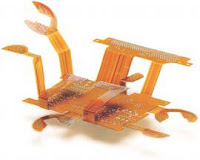In the
May/June issue of
SMT, I wrote a round up of comments on cleaning, but there just wasn’t enough room to include everything. And, in the desire to say it all, here are some important facts that weren’t covered in the article,
“Cleaning Equipment and Materials Trends.” The history of SMT cleaning helps us understand modern cleaning technologies as well as what’s in the research pipeline.
We have come a long way from the 1985 Montreal Protocol to methods of improved cleaning that have less of an environmental impact. The cleaning trend since the 1980s has shifted from a no-clean process to an emphasis on cleaning, especially with lead-free pastes/fluxes and higher processing temperatures. Defluxing used to be reserved for military and medical manufacturers, and now even boards for commercial products require defluxing.
Modern cleaning equipment generally performs faster with less power, less water, and fewer chemical additions. Strict quality control tolerances and traceability via statistical process control (SPC) data recording are expected from the latest equipment. As operators place assemblies into defluxing equipment, barcode information is immediately scanned, and one more step in the assembly process is recorded.
Technology has moved upstream. Conventional SMT assemblies use low-residue, no-clean soldering practices. Modern challenges for PCB cleaning hinge on high-density miniaturized assemblies with lower standoff heights and decreased area-array pitches. I also discussed the training and education necessary for the modern cleaning processes in
"Spring Cleaning: Facility Implementation Is Key.”There are a variety of ways to clean: aqueous, semi-aqueous, plasma-based, sonic-based, or through specialty chemical formulations that fit the particular paste/flux/component combination.
We didn’t talk enough about the amazing research work being done in this field. Ning-Cheng Lee is one of the researchers working on the best cleaning method to fit each lead-free material/flux application. He has tested many methods and materials and has come up with a best-fit system for many materials and equipment. His research will be presented at SMTAI this year in San Diego.
The High Performance Electronics Cleaning and Coating Symposium is a premier conference focused soley on cleaning to be held September 30, 2009, in Coventry, England. All types of presentations — from high-reliability and high-performance electronics assembly cleaning to case studies from manufacturing experts in aerospace and defense, automotive, consumer telecom, and medical products industries — will be heard in Coventry.
Finally, what I didn’t get a chance to say in my round-up cleaning article was thank you to all the great suppliers, researchers, and users in our industry who helped me put together this piece. I would like to thank all of you who contributed your time and effort including the Mikes:
Mike Konrad, Aqueous Technologies
Mike Jones, MicroCare
Mike Bixenman, Kyzen
And many other experts:
Harald Wack, Ph.D., Zestron America
Steve Stach, Austin American Technology Corp.
Doug Winther, Technical Devices
Chris Merow, Blue Thunder Technologies
Scott Symanski, March Plasma Systems, Inc.
Bill Schreiber, Smart Sonic Corp.
Yeqing Su, Freescale
Jun Choi, SII NanoTechnology USA, Inc.
Maurice Collins, Ph.D., Stokes Institute
Ning-Cheng Lee, Indium Corp.
 Gail Flower, editor at large
Gail Flower, editor at large
 Meredith Courtemanche, managing editor
Meredith Courtemanche, managing editor







